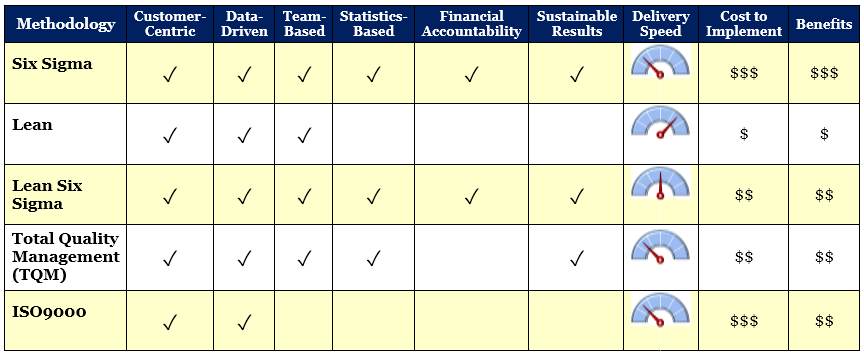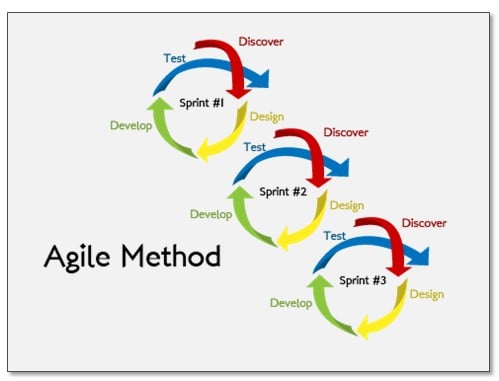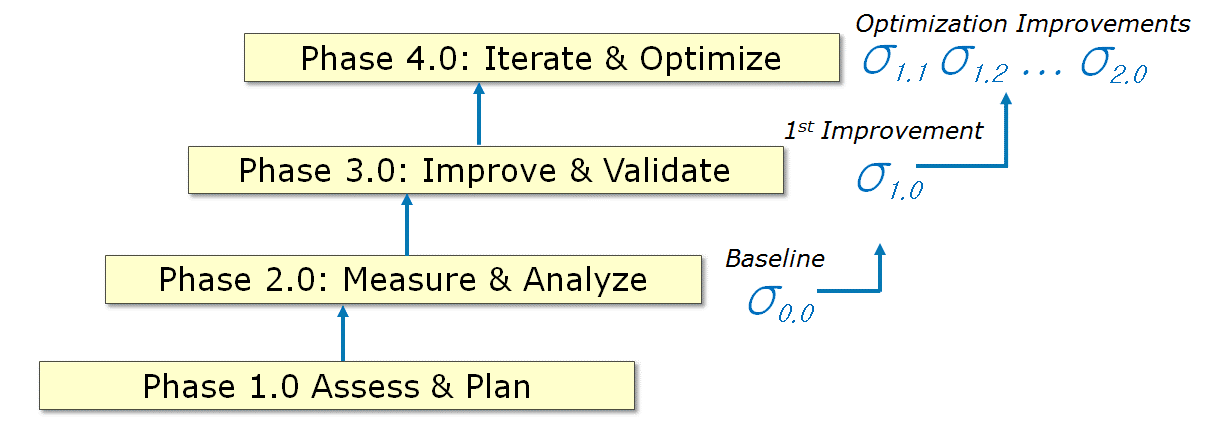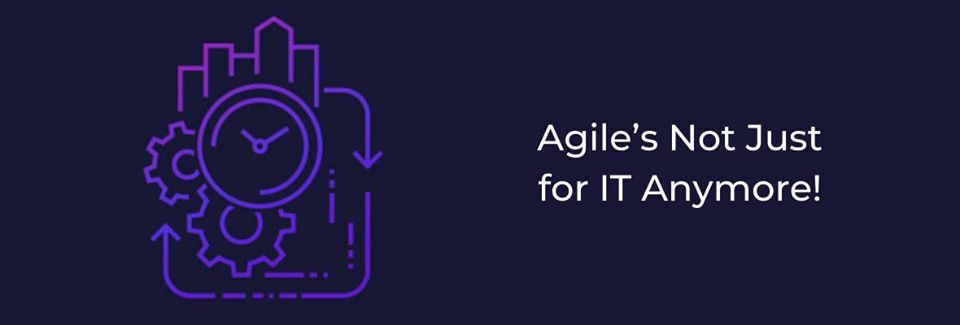Everyone Can Play – Agile’s Not Just for IT Anymore!
In 1982, AT&T entered into a consent decree to break-up the Bell System to settle a Federal antitrust lawsuit against them. It was one of the greatest break-ups of all time.
The company had enjoyed a monopoly as a communications provider for nearly 9 decades!
However, the motivation behind the agreement wasn’t just to split-up this monopoly. It was more about opening up communications markets to all service providers including MCI, Sprint, and others. It wasn’t just AT&T’s game anymore!
So, on January 1, 1984, when AT&T was officially broken-up, the long-distance and communications equipment markets became open to all players. Since then, the wired and wireless communications and equipment markets have evolved – and are continuing to evolve. We've felt the impact of that decision on our lives, businesses, and interactions.
Now in 2020, “...Agile’s not just for IT anymore!”
Recently, I hosted an Info Session for the Six Sigma and Agile Sigma© courses I teach at a local college. One attendee asked, “I thought Agile was just for IT projects. How can other organizations use Agile?” (or something like that).
I responded by saying that Agile Sigma© provides a methodology designed for all organizations to benefit from both Agile and Six Sigma. I added emphatically that “with Agile Sigma©, Agile’s not just for IT anymore!”
How does Agile Sigma© democratize the Agile method?
First, you must know the key to how Agile Sigma© makes Agile accessible to all organizations. It leverages and integrates Agile’s fundamental features into a streamlined adaptation of Six Sigma’s structured, statistics-based DMAIC methodology. These features include:
- Ceremonies (e.g., Scrums, Sprints, etc.)
- Roles (e.g., Product Owner, Scrum Master, etc.), and
- Artifacts (e.g., Product Backlog, Sprint Backlog, etc.)
This hybrid approach enables any organization to respond to changing conditions and customer needs flexibly, quickly, and effectively. However, it must be a group effort, and the decisions must be backed by data.
And it’s not only for projects…
You can use Agile Sigma© techniques to improve an everyday business that needs:
- Planning
- Coordination, and
- Routine execution
Adopting an Agile mindset allows you to apply iterative tools and approaches to conduct and continuously improve daily operations and team interactions.
So, the Agile Sigma Methodology© can be likened to the opening of the communications markets in 1984. Everyone can now enjoy what used to be for the IT community alone with this methodology. It’s now a level playing field for everyone.
The business need
When business executives have to replace an existing business approach or implement a new method, the variety is wide. Some of the options include:
- Six Sigma
- Lean
- Lean Six Sigma
- ISO9000, and more
The process of selection focuses on assessing business drivers. Here you decide on an improvement methodology that closely meets your needs to:
- Enhance business process performance
- Match changing customer needs, or
- To obtain or regain a competitive edge in the marketplace.
Now, this is the challenging part. Finding the methodology that consistently provides meaningful impacts for clients and business operations. However, you want to do it nimbly, innovatively, and with agility.
In other words, you need a methodology for business process improvement that’s sustainable and customer-centric to deliver a significant result. Plus, it must be quick and cost-effective.
Business executives and managers today are feeling the “need for speed” to remain competitive going forward.
The list (before Agile Sigma©)…
To choose an ideal methodology for your business needs, you have to conduct an evaluation to assess and select from a range of approaches. Table 1. Below has a list of these approaches with specific attributes for proper comparison. They include pure as well as hybrid methods that have developed over time.

Table 1: List of Widely-Used Business Process Improvement Methodologies and Their Attributes
The Six Sigma programs have delivered sustainable, significant, and financially accountable outcomes. Albeit, the methodology is known for being “too slow” and “too 20th century” (a Six Sigma student actually said that). It’s also comparatively expensive to implement and sustain.
In the Improve phase, the Six Sigma project design delivers a unique development in the process performance (Sigma) level. Then in the Control Phase, it uses controls to sustain and maintain that singular gain for at least one year. So this process is known to leave opportunities for process optimization on the table.
In contrast, many business process improvement programs have employed Lean Principles and Techniques. The most significant is manufacturing on an “à la carte” basis to deliver rapid improvement, quickly and inexpensively. However, the perceived limitations of the Lean approach are:
- Lack of a comprehensive framework
- Difficulties in sustaining Lean initiatives (e.g., 5S), and
- No “built-in” financial accountability
Lean Six Sigma has gained traction as an evolved hybrid of both approaches. The pure Six Sigma’s approach deals with reducing process defects, while the Lean principles improve flow and eliminate process waste (or “muda” according to Lean practitioners).
The history of Agile Sigma©
Genesis
I have worked as a Six Sigma Black Belt and as an Agile Scrum Master in a Fortune 50 company. So, it became more apparent how the synergies among these two disparate approaches can deliver more value collectively.
Six Sigma can provide meaningful and sustainable results, but it takes too long (typically) and stops short of “optimal” performance.
On the other hand, Agile is quick and efficient. It uses an iterative Scrum-based approach for improvement that leverages team and tribal knowledge to meet the needs of users’. Albeit, it was considered solely as an option for IT project efforts.
Development
To benefit from the synergy of both approaches, Agile Sigma© was developed. It combines the best of Six Sigma and Agile into a sole methodology for all organizations. Therefore, you can implement and use it as a whole or in part based on your business needs.
In 2017, the development of the new methodology was complete and was introduced in early 2018. Agile Sigma© was officially copyrighted with the U.S. Copyright Office in 2018, and training courses were developed and have been taught as part of a local college’s Continuing Education program since then.
Testing
When a Chief Operations Officer for a Chicago-based manufacturer needed some help with a project in 2018, he reached out to me. We utilized key portions of the Agile Sigma© methodology on an “alpha” testing basis. And that was enough to provide the “bursts” of progress they needed to address critical capacity gaps.
To address all of the capacity gaps and avoid customer delays, We utilized iterative Sprints to accelerate project completion. Then, in 2019, based on the successful results from our 2018 testing, we utilized Agile Sigma© again. This time, it was the basis for the project and program management structure and approach for several other critical projects.
So now, to any business that’s seeking a significant, quick, and nimble way to improve customer value in 2020, Agile Sigma© is a new option available.
The new approach
The Agile Sigma© approach is a streamlined adaptation of the standard five-phase DMAIC methodology of Six Sigma. It enables more efficient project execution with optimized process results.
Agile Sigma© also incorporates the iterative techniques used in the Agile method to enable incremental process improvements. So teams can develop, validate, and analyze for statistical significance. Then go further to optimize the process to meet customer needs quickly and more efficiently.

The Agile Sigma Methodology Overview
The four phases of the Agile Sigma Methodology© as shown in the above figure are:
- Assess and Plan
- Measure and Analyze
- Improve and Validate
- Iterate and Optimize
Assess and Plan
Agile Sigma© projects start with the Assess and Plan phase to assess the current environment and plan the project. This phase is similar to “Define” in Six Sigma – but with iterative planning, an approach using a project assessment survey tool.
Measure and Analyze
After the gate review, as in Six Sigma, Agile Sigma© projects continue into this second phase. Here, it defines, measures, and analyzes the key process output metrics. It also maps out the current process and defines future state processes (via user stories in a product backlog format, as adapted from Agile).
Improve and Validate

The Standard Agile Method
The Agile Sigma method also combines some of the standard methods of Agile development to deliver team-driven process improvements more rapidly. as shown in Figure 2. These include:
- The Scrum team approach
- Sprint cycle, and
- Iterative process improvement techniques
Here, the iterative Sprint cycle concept initiates and validates an enhanced process Sigma level as the primary level of improvement. In other words, shifting from a baseline of σ0.0 in Measure & Analyze to a newly enhanced process performance level, σ1.0, at the end of the Improve & Validate phase.
Iterate and Optimize
This final project phase allows the Agile Sigma© team to optimize process performance with more Sprints. Additional improvements are rolled out as the team achieves each successively higher process Sigma level before closing the project. They can then track the financial benefits for 12 months.
Agile Sigma© also preserves and integrates the most effective aspects of the Six Sigma DMAIC approach. These include:
- Customer-centric process and metrics analysis
- Standardized team structure
- Statistical analysis-based decision making
- Financial accountability, and
- Sustainability of results.
The key differences
Streamlined Project Approach
This approach delivers projects effectively and quickly
The Agile Sigma Methodology© streamlines the standard DMAIC approach for process improvement by combining, replacing, and refining activities. In the process, it also identifies activities that you can accomplish concurrently.
Agile Sigma© uses iterative team-centric Sprints to improve, validate and rollout statistically significant process improvements incrementally. By breaking the improvements down into manageable subsets of the total scope for each Sprint, the project team is able to deliver the first improvement sooner than with other methods. So, rather than one large process improvement rollout, the team incrementally improves the process over time to optimize performance.
Iterative Processes that Leverage Team Expertise and Knowledge
The key to the use of iterative Sprint cycles in Agile Sigma© is the leveraging of team expertise and knowledge. The process helps to identify and utilize key contributing factors to improve, test, and independently validate the improvements.
The subject matter and process experts hone-in on and “tune” the improvements that really make a difference to the users and customers of the process. However, they continue to conduct tests to assess significance prior to rollout.
Using this approach, the Agile Sigma© project team improves the process incrementally to meet the Sprint objectives (backlogs). And, through repetitive delivery of improvements, they create a culture of change with their customers and users.
Optimized Processes
Once the improvements have been rolled out in a Six Sigma project, the results are maintained and sustained for 12 months. It helps to achieve the financial benefits projected from the initial improvements. So, you don’t need to implement further improvements for the next year once the process is in the “Control” phase.
Albeit, the Agile Sigma© project is different. It iterates until the process is optimized - not just “one and done” improvements.
Once the initial improvements have been rolled out, the improvement and validation teams continue to iterate and optimize the process. So you achieve successively higher process Sigma levels (e.g., σ1.1, σ1.2, σ2.0, etc.)

The Iterative Achievement of Optimized Process Performance (as measured by process Sigma Level)
The above figure indicates how to iteratively and incrementally to achieve project goals.
The new list (with Agile Sigma©)
As part of the business process improvement approaches, Agile Sigma Methodology© provides a strong alternative. It provides the best features of Six Sigma with the rapid delivery of benefits from the Agile development method. Now business executives and managers have the option that:
- Delivers results quickly
- Enables data-driven decision making – so you know you’re making “good” decisions
- Delights your customers – because the methodology, metrics, and tools are all customer-centric
- Utilizes the existing team knowledge and expertise – to deliver improvements that matter more quickly
- Provides financial accountability – so you know you’re getting the actual financial benefits
The list of business process improvement methods as shown in Table 1 have been updated in Table 2 below to include Agile Sigma© – the new kid on the block – as a new method to be considered for process improvement.

Table 2: Updated List of Business Process Improvement Methodologies and Their Attributes
What’s next?
A lot of companies are seeking an innovative new methodology to fulfill their need for speed. The Agile Sigma Methodology© adds efficiency and flexibility to meet up with the customer’s changing needs. And it’s now available in part or as a whole for all interested organizations - no monopoly.
If you’re interested in adopting an Agile mindset for your business, then stay tuned to this blog for a 2-part article entitled “The Road to Agility...”It’ll provide a step-by-step detail on how to implement Agile Sigma©.
